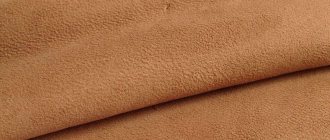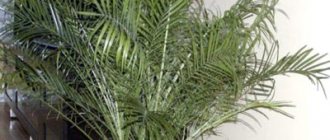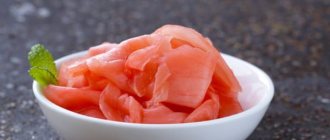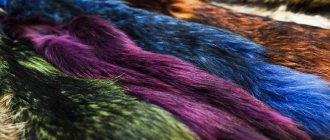Why polish inventory?
Let's start with why to do this. Beginner skiers sometimes come to the conclusion that such a procedure is unnecessary. And this is their mistake. Here are a few reasons why this is the right thing to do:
- When the ski and snow surfaces come into contact, a frictional force occurs. The run can be easy or difficult. The quality of the equipment and the condition of the snow cover play a role in this. Lubrication is necessary for smooth gliding.
- The ointment prevents the equipment from slipping back when pushing off. A special product allows it to adhere well to snow.
- It is the regular use of lubricants that will allow the ammunition to remain in working condition for a long time.
Lubricant for plastic skis
For classic skiing, skis are also treated with anti-slip agents, reducing recoil. Beginners are advised to select a holding ointment whose minimum temperature is 3-4 degrees higher than the current temperature. Example: if it is -5 degrees outside, composition -1+1 or -2-0 will do.
The choice of lubricants is also influenced by the terrain.
If you plan to move on flat terrain, apply several layers of sliding ointments. If the route runs through hilly terrain, you will need skis that will hold well. In this case, a soft holding ointment should be placed under the cargo area.
What equipment does not need to be lubricated?
Competent specialists do not place special emphasis on the fact that the rules of care must be strictly followed. Their opinion is that everyone chooses how to care for their equipment. If the hobby is serious, a person will use wash-off products to ensure that the ride is perfectly smooth and enjoyable. If the equipment is taken for a short time, it is not necessary to rub it. In addition, the plastic surface, for example, has the property of natural sliding.
How to tar at home?
In order for skiing to bring joy, you need to consider in advance the question of how to properly resin wooden skis. In order not to waste time looking for workshops that can work with such sports equipment, it is better to immediately use the home processing method.
It is necessary to consistently follow all the steps described in the instructions. Otherwise, the inventory will be poorly processed, and unpleasant memories will remain from the walk.
Choosing a location for the procedure
Ski waxes and resins contain harmful chemicals that will evaporate when heated. It is better to carry out the treatment outdoors or at least on the balcony. If this is not possible, you need to stock up on protective gloves and a respirator.
To position the skis with the bottom surface up, you need to install two or three chairs and place the products on them so that they are positioned level without tilting.
Selecting a Heat Tool
To ensure that the ski resin saturates them evenly, the surface of each wooden ski is heated before applying it. To do this, you can use the following tools:
- gas burner;
- industrial dryer;
- blowtorch.
You can use any of the listed heating tools that are available.
Necessary equipment
To tar wooden skis, you need to prepare:
- special resin (you can use birch tar purchased at a pharmacy as a lubricant);
- a scraper or sandpaper, a brush with brass padding;
- rags, cloths made of synthetic materials;
- lubricant remover;
- brush;
- heating tool;
- gloves;
- spacer;
- silver or ointment for holding, primer.
Process description
Instructions for resinizing wooden products consist of the following steps:
- In order for the new layer of impregnation to adhere well to the surface, you need to wash off the old lubricant with turpentine or a special remover. You can remove the remnants of the old coating with a scraper, and then walk over the surface with sandpaper.
- Preheat the container with resin in a glass of warm water. This way the substance will become liquid and be better distributed over the surface being treated.
- Having placed the ski on chairs in a horizontal position, heat one third of the surface with a gas burner (or other tool), avoiding charring the wood. Apply a layer of resin to the heated part of the ski and spread it with a brush in a thin layer.
- Heat the tarred ski until the resin begins to bubble, which should be smeared again with a brush. Then process the remaining two-thirds of the ski in the same way.
- In order for the new lubricant to dry better, it is recommended to leave it for a day. Then reheat the surface and apply a second layer of resin, treating light areas especially well.
Resin stains should be promptly removed with an old rag before it has time to absorb or stain the floor.
After the procedure
If tarring is carried out before the new season, then after the treated surface has dried, a special primer and ointment must be applied to it for holding. If the weather is warm, then to prevent snow from sticking you can cover the sliding surface with silver.
How to properly lubricate skis: important tips
- The material of manufacture influences the choice of lubricants and the lubrication process itself. Plastic is unpretentious and allows you to use such equipment without proper care.
- Wooden products are afraid of moisture. If moisture penetrates inside, the base swells. The friction index increases. The going gets rough. After some time, damage is discovered.
- Alpine skis use a sliding polyethylene coating, the strength of which depends on the purpose. For ordinary equipment, extruded polyethylene is used, which glides perfectly without additional lubrication; for professional equipment, graphite is added to polyethylene for rigidity, which requires careful attention to the equipment.
If you prefer cross-country skis and want to use them for a long time, listen to the following tips.
- If you want to use lubricant less often, you should purchase samples with a notch. The level of gliding for this type will be lower. You won’t be able to ride them for a long time or quickly, but they are perfect for those who love slow, classic skiing.
- If you use candles for rubbing, it will look like an economical way of care. However, this method is not among the best. The effect of candle paraffin will quickly end. It will be erased from the surface quite quickly. A better option is to use a cheap specialized substance. Its efficiency rate is much higher.
- For those who like to drive fast, following the rules is a must. Only in this way is excellent gliding and, accordingly, ideal speed achieved.
- Equipment requires regular maintenance to remain in perfect condition. Ignoring lubrication will lead to a decrease in the quality of high-speed running. It is best to carry out lubrication every time you plan to go skiing.
- During a normal walk, careful treatment is not necessary. If there is a competition coming up, a marathon, then weather conditions are taken into account. Professional skiers take this issue very seriously and select coatings according to air temperature and precipitation, since all this affects the structure of the snow cover.
- Lubricant for ski sliding at home is purchased selectively. Skate or classic strokes require the use of different lubricants.
- When buying plastic samples, you need to keep in mind that to preserve the product, they are pre-waxed. But the applied layer is unacceptable for driving. Accordingly, it is removed and new layers are applied.
How to lubricate skis
There are special ointments for holding and gripping skis, which are sold in sporting goods stores. There are also good old methods that are still relevant today, but only for wooden skis.
Plastic skis
For plastic skis, traditional methods are not relevant (they can be smeared with anything - there will be no harm, but the lubricant will be erased very quickly). It is also not worth paraffinizing them: the material may not withstand exposure to high temperatures. In this case, there is only one piece of advice: buy a special ointment and use it according to the included instructions.
Wooden skis
Like plastic skis, wooden skis can be rubbed with a special lubricant for gliding, and paraffin can be used for traction (for a softer ride on problem areas).
How to wax skis
Source: Sneg TV
From this video you will learn how to properly apply paraffin and fix it even without a special iron.
The choice depends on the temperature
Once again, pay attention to such an important aspect as the influence of weather conditions.
If you want to go for a ride, check the thermometer outside the window. The moisture content of the snow cover also plays an important role in the selection and application of the composition if it is necessary to achieve even, smooth gliding. But these parameters are more difficult to find out. The first step involves thorough cleaning, followed by surface treatment. The final step is to apply a holder ointment to the block, securing the previous layer. It is the last finishing layer that is selected depending on the temperature and condition of the snow. As well as the type of product. When it is relatively warm, the use of liquid lubricants is recommended. When cold - hard.
Ointments-paraffins for sliding plastic skis
Cross-country, hunting and alpine skis usually do not need lubrication when they are new. Experts recommend using ointments after the first season of skiing or as needed. When plastic skis begin to glide worse, paraffins are applied to them. They come in different consistencies - liquid, hard and soft. The longest-lasting effect is provided by hard ones, which are applied using a special tool - an iron. Good compounds are able to stay on the surface at distances of up to 20 km.
You need to choose paraffin lubricants based on the temperature of the snow. All of them are divided into 3 types:
- for cold skiing on snow with temperatures below -12 degrees;
- for snow with temperatures from -12 to -2 degrees;
- warm lubricants for snow temperatures above -2 degrees.
The products contain silicone, salts, oxidized metals, and the main component responsible for good gliding in warm weather is fluorine. Ointments with a high content of this substance are designed for mild and humid weather, while ointments with a low content are designed for frosty and dry weather. There are also universal paraffin compositions designed for use in a wide temperature range from 0 to -30 degrees.
Variety of coatings
First you need to understand that processed products are divided into conventional, low-fluoride and high-fluoride.
To use regular ointment, make sure the ambient humidity is no more than 55%. If the humidity parameters are higher, other products with a high fluoride content are used. Fluoride-containing products are more expensive, but better in quality. A similar composition applied to skis gives them the opportunity to gain better glide.
However, there are also disadvantages. Rubbing is sometimes carried out with a lubricating iron. This is a special device. There is one for lubricants, another for paraffin. Sometimes the rubbing process increases the temperature. Then, harmful substances may be released from the ointment, which contains fluoride. Use caution and care when using a respirator. If there is no protective device, use a well-ventilated area for work.
Lubrication
It belongs to the “lazy” type, which does not require long application time and effort.
Presented in the following forms: aerosol, emulsion, paste and cream. The negative point is the relatively short driving distance over which the composition operates. After walking 6-10 kilometers, you will have to re-process the sports equipment. Considering this factor, amateur skiers do not waste extra time, for which they lubricate their skis immediately before the start, taking the ointment with them. The mixture sets quickly, literally in 2 minutes.
Paraffin
This product is considered to be of higher quality.
Having a solid shape, it creates durable protection for the surface of the equipment and lasts much longer. There are several varieties. It is known to be fluorine-free, low-fluoride and high-fluoride. According to the markings they are designated as CH, LF and HF. The choice of the type of paraffin product is known to be influenced by air humidity. The higher its level, the greater the percentage of the substance in the lubricant. More often it is sufficient to use the CH and LF markings. High fluoride (HF) additive is applied as desired in appropriate weather conditions.
For paraffin, it is important to comply with a certain outdoor temperature. They sell it as a set, which includes several varieties. Each type has a specific temperature range.
Reviews of ointment "Luch"
These are products from the Yekaterinburg company Ray, which are used throughout Russia. In general, reviews note the decent quality of the representatives of the Luch line, but only at a discount on the budget of these funds. According to users, sliding paraffins and adhesion compounds under ideal conditions perform no worse than expensive foreign analogues. Luch ski ointment is mainly used for training. This is due to the fact that in warm weather and severe frost such products do not allow skis to reach their full potential. The optimal temperature for using Luch ointments is in the range from +4 to -5 ºC. Experienced skiers also recommend using formulations containing fluoride, since they contain the best qualities that these ointments possess.
…I rode in Bitsa on the first snow this year. On one of the climbs I was stopped by a man who admitted that he had just bought himself plastic skis. - Why do you easily climb the mountain, but my skis roll the same way both forward and backward? - What did you smear them with?
- What, do they also need to be smeared?!
This dialogue, for all its apparent implausibility, is nevertheless very characteristic. Do I need to lubricate plastic skis, and what should I use?
Master of Sports of the USSR in cross-country skiing, editor-in-chief of the magazine “Skiing”.
I. Should I buy skis with notches?
This is a question to which, unfortunately, there is no clear answer. I can only tell you quite definitely - it is notched skis that are used by more than half of the skiing population of our planet, and this figure, you see, says a lot. The advantages of using skis with notches are more than obvious - you will never have to bother yourself with the question of how to wax your skis
. Agree, this way of putting the question is captivating - I took my skis, got up and went.
The disadvantages are just as obvious. Such skis will hold up well on soft, loose snow, but will not hold up on more or less hard ski tracks. And, the most annoying thing is that if the skis with notches do not hold, it is almost impossible to lubricate them.
I will say right away that I am not a fan of using these skis and from an early age I taught my children to oil their skis. This is a more complex option, which nevertheless guarantees normal skiing in any weather. However, the final choice is still yours, and the article below is addressed precisely to those who have made their choice in favor of “regular” classic skis, and are faced with the question of how to apply them to the grip (so that they do not give up or slide back ).
II. A set for lubricating skis consisting of two, three, sometimes four jars of ointment, a rubbing plug, and a scraper.
This is the bare minimum kit you'll need to lubricate your skis. To ski on the track in the classic style, the skis must be coated with holding ointment under the block. The block is the middle part of the ski, starting from the heel of the boot and located 15-25 cm upward from the binding. It is this middle part of the ski (block) that needs to be smeared with holding ointment so that your skis do not slip when you push your foot back.
For the first steps, a set of inexpensive domestic or imported holding ointments is quite suitable for you - it usually consists of four briquettes, sometimes jars made of thick metal foil or soft plastic. You will also need a synthetic rubbing cork. It is enough to buy a set of 4 holding ointments (for example, domestic Visti, Uktus, Festa, Zet, Ray or imported ones - Swix, Toko, Briko, Start, Holmenkol, etc.). etc.) and lubricate the skis only under the block, rubbing them with a cork.
So, having smeared the ski under the block with holding ointment, it (the ointment) should be rubbed with a rubbing stopper. Ideally, after rubbing you should get an even, slightly shiny layer.
If for some reason you can’t get an even layer, don’t worry about this, it’s enough to simply smooth the ointment.
Now about one more nuance. If you go into the woods to ski, it is advisable to always take with you a warmer and cooler holding ointment than the one you just applied, as well as a cork and a scraper. Let's look at the two most typical cases of ointment failure.
1. The skis don’t hold, or, as skiers say, they “give away”
that is, they do not allow you to push confidently; when you push with your foot, they slip back. In this case, it is enough to put a warmer ointment under the block on top of the old one and rub it with a cork, and the situation will be corrected - you can enjoy skating again. It will only take you a couple of minutes to correct the grease.
2. Skis, as skiers say, are “dull”
that is, they don’t move at all, and sometimes they also become covered with ice or snow under the block - in the middle part of the ski where you applied too warm ointment. Skiers call this situation “sticking” if snow sticks to the wax, or icing if ice forms on the wax. There is a way out, you just need a little more time.
After this, intensively rub the ski block, first with a glove, removing the grease from the remaining snow and droplets of moisture, and then intensively with a cork, warming up and drying the ointment. You will have to exert much more effort compared to rubbing in a warm room. Now that the ointment has dried and warmed up, you can put an additional layer of cooler ointment on top of the unsuccessful lubricant. As a rule, in 99 percent of cases, this technique corrects the situation and allows you to continue your walk in the forest.
III. Let's look at a specific example: how to wax skis at minus five degrees?
For example, the temperature outside is minus five degrees. You have a set of Wisty ski waxes, consisting of five briquettes. The most logical option for lubricating skis at minus five degrees below zero would be to apply blue ointment - 2 - 8. However, remember the golden rule: for a ski trip you should always take two briquettes (cans) of borderline ointments in your pocket or pouch. In this case it will be - 0 - 2 (purple ointment) and - 5 - 12 (light green). This way, both when it warms up and when it gets colder, you can make adjustments to your lubrication and enjoy your skiing.
When you return home, remove the old ointment from the ski with any plastic scraper (a piece of a plastic ruler, an old audio cassette case, etc.). After this, you can safely apply new lubricant to the remains of the old grease. If you want to clean your skis completely (which, in general, is completely optional), you can do this with a piece of cotton wool soaked in gasoline or turpentine. If funds allow, buy a normal plastic scraper and a bottle of branded cleaner - it has almost no smell, so you won’t “offend” anyone in your household with the smell of gasoline.
IV. A set of liquid ointments, a wash, and a scraper for skiing in positive weather.
As I already said, four inexpensive jars of ointment, a scraper and a rubbing plug will be enough for almost all occasions. But there are situations when there is still a lot of snow, and the air temperature is already above zero. Sunday afternoon, sun, drops drive you out into the street with your skis, you smear yourself with the warmest briquettes of ointment you have (say, VISTI 0-2 or Swix + 1 - 0), and the skis... absolutely do not hold, they “give away”. It's a shame? And how! And, nevertheless, there is a way out of this situation, and it is quite simple - buy a tube of universal liquid ski ointment (skiers sometimes call liquid ski ointments klisters) and get a bottle of wash (gasoline, kerosene, turpentine). I want to warn you right away: buying liquid ski waxes will put you in the category of slightly more advanced skiers, because handling them will require a little more fiddling and experience. But the gain in the form of comfortable skiing on the spring track will be simply incomparable.
So, you can get by with a set of two tubes of liquid ointment – red (plus) and purple (zero and a slight minus). We apply red ointment at any above-zero air temperature, and purple ointment at zero or slightly below zero. It is important to understand here that spring snow is almost never soft and fluffy like in winter. As a rule, in the spring it consists of hard, large snow and ice granules. Skiers call this snow firn. For such icy snow in sub-zero weather you will need a purple klister.
How to apply liquid ski wax to skis? This should be done in a warm room, evenly squeezing fat drops of ski wax onto the last (middle part) of the ski and then rubbing this ointment with a scraper.
And now about why you have to fuss a little more with liquid ski waxes compared to solid ones (jars or briquettes). The fact is that liquid ski waxes, whose consistency is very reminiscent of condensed milk, tend to stain hands and clothes, and in order to avoid these sad consequences, after training, skis should be immediately cleaned with a scraper and then with a wash. The second option is to pack your skis in a case, take them home and clean them there. Still, most skiers prefer to clean their skis immediately after finishing training - there is less soiled clothing and sticky hands, and the inside of the ski cover does not get dirty. The obligatory need to clean your skis after a walk is perhaps the only inconvenience of using liquid ointments. But the constant companions of liquid ointments are usually spring sun, wonderful skiing and a wonderful mood. So, believe me, the game is worth the candle.
V. Economy kits of ointments for lubricating skis.
As a rule, all leading manufacturers sell economy ski wax kits containing two or three cans of solid wax and a rubbing stopper.
Sometimes this kit also includes one or two tubes of liquid ointment and a scraper. It happens that this kit is packaged in an inexpensive belt bag (skiers call it a “pouch”), and sometimes it also includes a can of wash. This is a very good option for solving all your problems with ski lubrication for the next few years in one fell swoop, so be sure to use it if possible.
VI. Gliding ointments, or, as they are also called in Russia, paraffins for lubricating skis.
This is an area that I strongly advise you not to trespass into. Believe me, modern plastic skis glide perfectly on the snow without any special treatment. This glide will be enough for you for any, even the longest walks through the forest in any weather.
Therefore, you can forget about the ends of the skis (that is, what is located above and below relative to the block - the middle part of the ski) and do not treat them with anything.
It’s another matter if your walks in the forest brought you to such a state that you wanted to go to the start of, say, the 50-kilometer “Moscow Ski Track” or, even more so, to test yourself in a very difficult classic MVTU Race.
In this case, you need to learn how to wax skis; you need to acquire not only a set of gliding ointments (paraffins), but also an iron, a brush, a hard metal scraper, a machine for preparing skis, etc. But these are pleasant chores. This means that you are already firmly “hooked” on the cross-country skiing needle, which means that skiing has already become a very important part of your life. But this time we won’t talk about all the intricacies of preparing skis with gliding ointments - this is beyond the scope of our conversation today.
VII. How to improve ski glide?
I confess to you that this chapter is an insertion; I am forced to write it several years after writing the article itself. I am forced because I see that many of you, our readers, still have questions even after reading this article, and I have to answer them after receiving your letters. That is, it seems that I still failed to explain some important, basic things in this article. For example, there are a lot of questions about how to improve ski glide
. Therefore, this chapter is a summary of everything that has already been said in this article and in the answers to your questions (as well as what has not been said) about ski sliding.
So, what affects ski glide?
?
Fork #1.
Smooth skis or knurled skis?
Remember that skis with notches will always glide significantly worse than skis without notches.
More details about this are in the very first chapter of this article
and in this my response to one of your letters:
Fork #2.
Type of sliding surface plastic
.
Again, I direct you to my answer to Natalya Sinitsina. Skis with notches don’t go - it’s just terrible!
— I spoke there in some detail about two types of sliding surface plastic - high molecular weight (expensive and fast) and low molecular weight (cheap and relatively slow).
Please read. Look at my car analogy
. Remember that a wheelchair can be improved and modernized in some way, but making it drive like a Porsche 911 or even like a Ford Focus is unrealistic.
Fork #3.
Should I use sliding lubricants?
Let me emphasize that I wrote this article with beginners in mind, people just taking their first steps on skis.
Within the framework of this concept, I believe that there is no need to prepare plastic skis for gliding
- modern plastic skis glide quite well on the snow.
And yet, since this question is asked constantly, I will answer. The first thing you need to do is learn to distinguish between sliding lubricants and grip lubricants, so as not to fall into the situation described in this letter
, when our reader Tatyana Shalimova smeared her skis along the entire length with grip lubricant and wondered why her skis weren’t moving.
So, have you already learned to distinguish grip ointments (“plasticines”) from gliding ointments (“candles,” sprays, applicators, etc.)? Then -
Fork No. 4.
Quick application gliding ointments (“lazy”) or professional ones?
Firstly, you should keep in mind that there is a fairly large selection of quick-apply gliding ointments at your disposal (they are also sometimes called “lazy” ointments). To apply these ointments to the sliding surface of skis, you do not need to have any equipment.
And finally, the pinnacle of technology for preparing skis for gliding: the use of so-called paraffins, sprays, emulsions, powders, accelerators, etc. You will need: a strong, non-wobbly table, a ski machine, two clamps, a professional ski iron (in no case not household!), brushes, scrapers, fiberlen (special non-woven wipes for treating skis), paraffins, powders, accelerators... I’m not sure that it is advisable to describe this rather complex and expensive process of preparing skis in an article for beginners. However, if I see that even within the scope of this article for beginners, what brushes are needed for a beginner when preparing the sliding surface of cross-country skis?
QUESTION ANSWER
After the publication of this article, letters began to come to me from time to time with “naive” questions that readers could not find answers to in this material. At first I answered them privately, until suddenly it occurred to me that these answers might be of interest to a wider circle of our readers. So if you haven’t found the answer to your question in the article, write to me in my mailbox, send me your questions, I will definitely answer them. In the meantime, here are the first questions and answers to them.
2. Aluminum ski poles bend. What to do?
3. Is it worth waxing skis for grip in orienteering?
Published: November 13, 2015.
Anyone who has skied knows that they need to be lubricated. But not everyone knows about ski lubricant and why and how it is used. Now we’ll find out what they lubricate skis with. Let's look at lubricants for cross-country skis.
How to wax cross-country skis for a beginner
Firstly, the very use of the ointment, as already reported, does not allow a rollback and allows easy movement.
This is important for running models. The run should be free, so that nothing makes the move heavier. Secondly, compositions are divided into two types - sliding and holding. Given these definitions, you can understand how to carry out the process. The first type of ointment represents the first applied layer, which gives the lower ski part the property of free sliding. The holding type is applied last. It can be called a binder. The lubricant adheres firmly to the surface.
Plastic products are used as cross-country skis. Here the coating will also come in handy. And before applying it, carefully go over the treatment areas with thin sandpaper. Paraffin coating with an iron is more reliable.
Skis for skating and classic skiing
The skating option involves fast movement on the snow, so it is recommended to treat the equipment with ointments and paraffins to achieve comfortable gliding. You need to rub the soles of your skis, regardless of the stroke (classic, skating), as follows:
- Preheat the iron according to the temperature indicated on the package.
- Make notches on the block and add a few drops of paraffin.
- Run an iron over the surface of the ski from heel to toe until a uniform shine appears.
- Remove excess compound with a scraper.
- Carry out polishing as the first layer hardens.
The classic move involves sliding comfortably forward and holding back. To prevent kickback, it is worth purchasing a holding compound that treats the pads under the boot and forward by 30-35 cm.
The cleansing process must be carried out up to the heel of the shoe:
- Apply solid holding compound under the block.
- Treat the sliding area with paraffin.
- Walk over the surface with an iron.
- Wait a couple of minutes.
- Go over with fine sandpaper.
- Rub with synthetic (silicone) formwork.
It is better to make 2-3 thin layers, melting each one separately with an iron, so that a one-time treatment of the skis will be enough for about 50 km along the way.
How to remove old product
It is not difficult to remove the previous layer at home. This procedure should be done constantly before applying a new composition. Cleaning takes place in different ways.
- After liquid or aerosol lubricants, it is convenient to use a remover. Spray a soft cloth and rub it over the surface to be cleaned.
- For solid paraffin, there is a mechanical removal method. A plastic scraper and a brass brush will come in handy - the first cleans plaque, the second eliminates residues.
What you need to apply the ointment
Holding ointment is applied in small portions to a clean surface. Some advise applying it in a “herringbone” pattern, with the tip in the direction of movement, supposedly this helps the ski keep its direction better and cling less to the snow.
After placing the ointment on the sole, rub it in an even thin layer. Wipe off the remains with a dry cloth and let the ointment set, after which you can go for a ride. There is one secret here though. The kit includes two ointments: cold and warm. The latter is softer, but less tenacious. Warm can be applied over cold, so take them with you.
Note! If you feel that the skis are not moving well or the repulsion is too strong, then simply apply an additional layer in the same way, which can be done on the spot.
How to apply holding ointment correctly
Its area of action is the area where the boot is secured and 20-35 centimeters around.
This distance may vary. This is influenced by the person’s weight and height, the size of his feet and the length of the skis themselves. There is a preliminary inspection stage, the purpose of which is to find out whether the notch and groove are present. The first detail allows you to avoid using lubrication when walking lightly with normal equipment. In other cases, processing is necessary. The groove is not filled with composition. It remains empty and does not allow the feet to move apart, allowing them to move smoothly and succumb to the chosen direction.
Removing wax from skis or snowboards
Re-waxing is required when your winter riding gear begins to slip unsatisfactorily. In this case, you need to free it from the old layer of paraffin.
Place the ski or board in a special mounting machine. Move the scraper from toe to heel. Use a stiff brush to remove any remaining residue. You can also use a special solvent to remove old grease.
You can use a hot method, which can clean all layers of lubricant, as well as dirt. Take an iron, apply paraffin and immediately remove the resulting mass with a scraper.
How to handle sports equipment
There are several conditions that you need to pay attention to before lubricating your new skis. First, a clean and dry surface is required, and preparation must be carried out in a warm room. Next, a few more points are taken into account.
- The solid mixture is applied several times, spreading and carefully peeling off to a thin layer. The lubricant is allowed to set. Then they process it one last time, in the open air.
- You can test your equipment by going on a short hike of a couple of kilometers.
- If you plan to do classic skating, it is better to use sliding compounds. In this case, they are applied in the area of the front or rear ski part. Only the central area is processed with holding varieties.
- The paraffin mixture is applied dropwise. It is dissolved above the surface, leveling with an iron. After cooling, remove with a scraper and treat with a nylon brush.
Notched
If there is one, the material does not need to be lubricated, but such a part may wear off over time, and you will have to use paraffin.
Semi-plastic
The products are made from wood and a polymer (plastic) protective plate attached to the sliding part. In terms of operating conditions, this model is similar to the plastic one, so the maintenance rules are the same.
Wooden
Models made of wood require lubrication. Proper ski lubrication considers working with solid products. Along with paraffin, wax is also suitable. To make priming more convenient, take a tablet candle and use an iron to level it. Wax has its own instructions:
- The equipment is placed on a stable surface, leaving the underside exposed. Use a rag to remove dirt. Remove the old coating.
- The iron is heated and placed above the material at a height of 2.5 cm. Wax is applied to the iron. When the applied composition begins to melt and drip, it is carefully distributed over the plane. The procedure for deleting processing is similar to those described above.
- Wooden skis are treated using a special brush. The entire area is covered. Movements should be progressive with slight pressure on the instrument.
- The ammunition is cooled for several hours, then it is transferred overnight to a room heated to room temperature.
Combined
There is little demand for these models. They are suitable for classic and free skating. Lubrication technology involves the use of familiar compounds: ointments, paraffin. Today's market no longer has a large assortment of such varieties of ski equipment. The choice of modern skiers is often based on a certain style: cross-country, classic, skating.
For running
The necessary lubricants for this equipment are selected according to the weather, taking into account the temperature scale. You should lubricate your skis at the last, applying up to three layers and using light, as if rubbing, movements. It takes 10-15 minutes to cool down. Having rolled, armed with a scraper and wash, remove the remains.
- When using paraffin to process cross-country skis, the lubrication technology is complex and is divided into several stages.
- First, hot cleaning is carried out. A lubricant is made with a molten liquid using an iron, trying to ensure that the liquid composition does not have time to harden.
- The wax that has not yet cooled down is cleaned off with a scraper and a stiff brush, leaving a final layer 1 mm thick.
- Based on the weather, reapply and remove the special paraffin product in the same way as during the preparatory treatment.
- The equipment will cool down within half an hour.
- Use a nylon brush or a regular scraper to remove the remaining paraffin applied.
- The surface should become smooth and shiny.
For a classic move
A habitual walk without acceleration, without any techniques, involves the use of standard ointments.
- The area of the same name is coated with a mixture with a sliding function. The second composition goes to the block. To make it clearer, this is the name given to the area located in the middle of the skis, where the boot is attached.
- The lubrication process is standard. The choice of funds depends entirely on weather conditions. In cold weather it is convenient to use a rubbing stopper when applying a hard finish.
- It is important to remember that you cannot mix two types of ointments.
- Re-lubrication is done after the previous layer has set.
A nylon brush polishes the surface.
For skating
Here they use a less complex system of care.
It is enough to use a slip coating. You need to lubricate your skis at home several times. If you already have professional experience in skiing, one application of ointment selected according to temperature, directly at the place where you are going to start, will probably be enough for you. For less experienced skiers, the best option is the familiar paraffin treatment using all known products.
Basic rules for lubricating plastic skis
Solid texture ointments are applied in several layers. Each layer must be rubbed thoroughly. After application, the surface must be cooled, and the last layer can be applied directly outside.
It is recommended to test the wax before riding. If the product is not suitable and its validity period is short, it should be replaced.
For classic and skating style, paraffin is applied to the back or front. The central part can be lubricated with holding agents.
Paraffin is applied in drops and smoothed with an iron. After application, it must be cooled and removed with a scraper. The final stage is surface treatment with a nylon brush.
A ski with a notch does not need to be lubricated, but if it wears off, it is still recommended to apply paraffin.











